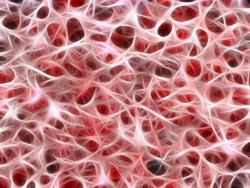Biodegradable scaffolds for tissues
The field of tissue engineering is responsible for constructing three-dimensional scaffolds to restore tissue morphology, structure and function. The range of materials used for this purpose is expanding. There is a need to create biomimetic environments where cells can grow into the tissue to be replaced. Scientists on the EU-funded 'Conducting organic materials for tissue engineering and drug delivery.' (COMET) project aimed to develop new conducting and biodegradable scaffold materials for use in tissue engineering applications. These materials would also have the capacity to deliver drugs or growth factors in a controlled manner. Researchers developed methodologies for combining nanoparticles with biodegradable polymers. Following production and chemical characterisation of the materials, they went on to test their biological characteristics and drug delivery properties. In this context, they performed a series of assays to determine the toxicity of the materials and their cell attachment and proliferation capacity. The COMET team were particularly interested in applying these polymer matrices to deliver neurotransmitters and promote nerve regeneration through electrical stimulation. This could prove therapeutic for nerve or spinal cord injury, as well as in neurodegenerative conditions. The same principle could also be exploited for engineering retinal implants in patients suffering from retinal degeneration to replace diseased photoreceptors with healthy cells. The ongoing collaborations of the COMET scientists with other European groups are expected to put these novel materials to the clinical test.







